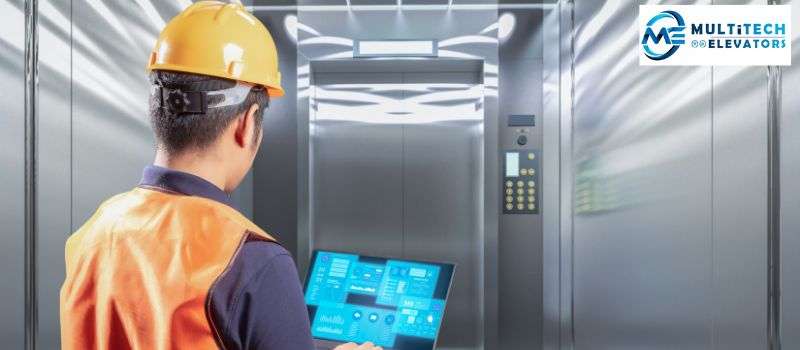Residential Elevator Regulations Overview

Residential elevators, while a significant convenience and often a necessity in multi-story homes or buildings with residents who have mobility issues, are subject to stringent regulations. These regulations ensure the safety, accessibility, and proper installation and maintenance of these elevators. Below is a comprehensive overview of residential elevator regulations.
Introduction to Residential Elevator Regulations
Residential elevators are small, privately owned lifts installed within homes or residential buildings. Unlike commercial elevators, residential elevators are often customized to fit the specific needs and aesthetics of a home. Despite their more private usage, these elevators must adhere to a range of regulations and standards to ensure the safety of users.
Key Regulatory Bodies and Standards
Several organizations and bodies are responsible for creating and enforcing regulations for residential elevators:
1. American Society of Mechanical Engineers (ASME)
The ASME is one of the primary organizations that develop safety codes and standards for elevators in the United States. The ASME A17.1/CSA B44 is the Safety Code for Elevators and Escalators, which includes provisions for residential elevators.
2. National Elevator Industry, Inc. (NEII)
NEII provides guidelines and best practices for the elevator industry, including residential elevators. Their standards often align with or complement those of ASME.
3. Americans with Disabilities Act (ADA)
Although the ADA primarily applies to commercial buildings, it has implications for residential elevators in multi-family housing or buildings that serve the public.
4. Local Building Codes
Local jurisdictions have their own building codes that often incorporate or reference national standards. These codes may have additional requirements based on local safety concerns or architectural considerations.
Safety Regulations
1. Entrapment Prevention
Residential elevators must have features to prevent entrapment. This includes a means of communication within the elevator cab that connects to emergency services or a responsible party. Additionally, there should be a manual lowering device or an emergency power source to allow for safe egress in the event of a power failure.
2. Load and Capacity
Regulations specify the maximum load and capacity of residential elevators. These limits are based on the size and intended usage of the elevator. Exceeding these limits can compromise the safety and functionality of the elevator.
3. Safety Doors and Gates
Elevator doors and gates must be designed to prevent accidental openings. They should be equipped with interlocks that ensure the elevator does not move unless the doors are properly closed. This is crucial to prevent falls and other accidents.
4. Fire Safety
Residential elevators must comply with fire safety standards. This includes using fire-resistant materials and incorporating features like automatic recall to a designated floor in the event of a fire. The elevator should also be integrated with the building’s fire alarm system.
5. Maintenance and Inspection
Regular maintenance and inspection are mandated to ensure the continued safe operation of residential elevators. These inspections should be carried out by certified professionals who can identify and rectify potential issues before they become hazardous.
Accessibility Regulations
1. ADA Compliance
For multi-family housing or public residential buildings, ADA compliance is critical. This includes ensuring that the elevator is accessible to individuals with disabilities. Features like braille buttons, audible signals, and appropriate door widths are essential for ADA compliance.
2. Dimensions and Space
The interior dimensions of the elevator must be sufficient to accommodate wheelchairs and other mobility devices. There are specific size requirements to ensure that the elevator can comfortably fit individuals with various needs.
3. Controls and Indicators
Elevator controls should be placed at a height that is accessible to all users, including those in wheelchairs. Visual and audible indicators should be used to signal the elevator’s arrival and departure, and floor indicators should be provided within the cab.
Installation and Design Regulations
1. Permits and Approvals
Before installation, homeowners must obtain the necessary permits and approvals from local authorities. This ensures that the proposed elevator installation meets all local building codes and safety standards.
2. Structural Considerations
The structure of the home must be able to support the addition of an elevator. This may require modifications to the existing framework or the addition of new support structures. The installation should be carried out by qualified professionals to ensure structural integrity.
3. Elevator Shaft and Pit
The elevator shaft and pit must be constructed to precise specifications. This includes ensuring that the shaft is properly aligned and that the pit is of adequate depth and construction to support the elevator’s operation and safety features.
4. Aesthetic Integration
While not a safety regulation, the aesthetic integration of the elevator into the home’s design is an important consideration for many homeowners. This includes selecting materials and finishes that complement the home’s interior.
Technological Advancements and Future Regulations
As technology advances, so too do the regulations governing residential elevators. New safety features, such as enhanced sensors and automated emergency response systems, are becoming more common and may be required in future regulatory updates.
1. Smart Elevators
Smart technology is making its way into residential elevators, with features like remote monitoring and diagnostics. These advancements can enhance safety and convenience but also require updated regulations to address potential cybersecurity risks and ensure reliability.
2. Energy Efficiency
Environmental considerations are also influencing elevator regulations. Energy-efficient motors and systems are being developed, and future regulations may include requirements for the energy performance of residential elevators.
3. Advanced Safety Features
New safety features, such as improved braking systems and more robust emergency power solutions, are being integrated into residential elevators. These advancements aim to further reduce the risk of accidents and improve user safety.
Conclusion
Residential elevator regulations are comprehensive and multifaceted, encompassing safety, accessibility, installation, and maintenance requirements. These regulations are designed to ensure that residential elevators provide a safe and reliable means of transportation within homes, while also being accessible to individuals with disabilities